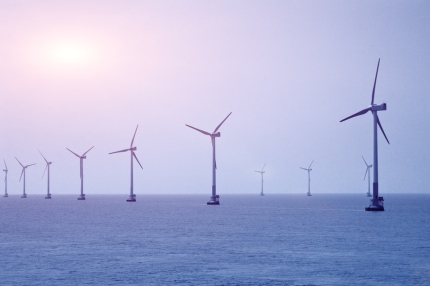Some of the best investments come from digging a little deeper beyond the headlines.
For example, we have all heard by now about Europe’s woes regarding natural gas and its dependency on Russian gas supplies.
But do you know what company is the second-biggest provider of natural gas to Europe, behind only Russia’s Gazprom?
It is Norway’s Equinor (EQNR), which is majority-owned by the Norwegian government, and provides about 20% of Europe’s gas.

Equinor’s Gas Gusher
The company produces more than two million barrels a day of oil equivalent (BOE), split evenly between oil and gas. Two-thirds of Equinor’s output comes from its prolific Norwegian offshore fields.
European gas accounts for about a third of Equinor’s total sales, most of it sold on the spot market, benefiting from current high prices.
As Barron’s Andrew Bary pointed out, “The company’s U.S.-listed shares, now trading around $33, look appealing at 8.6 times projected 2022 earnings of $3.88 a share. The stock carries a nearly 5% dividend yield. This reflects a base quarterly payout of $0.20 a share and special dividends of $0.20 a share quarterly that Equinor plans to pay this year.”
Bary added that: “Equinor also plans to buy back $5 billion of stock in 2022, resulting in a total yield (dividend plus repurchases) of close to 10%—one of the highest among major energy producers.”
Equinor’s Future
So how long will the good times continue for the company? I believe for quite a while.
Unlike some of its peers, Equinor plans to grow oil and gas production through 2026 (at about a 2% compound annual growth rate), while also growing its renewable portfolio.
One thing I really like about Equinor is that it is rather green for an oil and gas company. Its carbon footprint per barrel of oil and gas produced that is less than half the industry average. That’s because it uses power delivered by cables from onshore hydroelectric plants to run offshore rigs in two of its offshore fields. In contrast, most offshore platforms are powered by diesel generators or natural gas.
Equinor is also a leader among the major oil firms in offshore wind power generation and carbon capture, with nearly unmatched technological expertise in these areas. And, the company is investing into so-called blue hydrogen projects.
Equinor’s primary focus in renewables is on offshore wind, where it believes it can establish a competitive advantage with its rigs by leveraging its expertise in harsh offshore conditions.
The company does have one of the larger wind portfolios among energy companies. Its plan is to have 12 to 16 gigawatts of renewable power generation—mostly wind—in place by 2030. That’s enough to power about 10 million homes. To meet that goal, Equinor plans to increase renewable spending from 12% of total capital investment to over 50% by 2030, including a cumulative gross $23 billion over the next five years.
Antonio De Pinho, a senior resource analyst at VanEck, told Barron’s that “Equinor is the leading offshore operator in the world for both oil and gas and renewables.” A quick look at the company’s financials reveals that, despite the growth in renewables, oil and gas will remain Equinor’s cash flow and earnings driver for the foreseeable future. Company strategy focuses on investing in its highest-quality assets while divesting smaller, non-core assets. New oil and gas projects coming online by 2030 break even at less than $35 per barrel and payback comes in less than 2.5 years on average, according to the company.
Another very positive characteristic Equinor has that I love is that it has is no net debt, giving it one of the best balance sheets among major energy companies.
And there is lots of room for dividend growth. Its base dividend is low relative to its peers, and the company plans to increase it gradually in the coming years. The special dividends, announced for 2022, could become the norm given Equinor’s healthy balance sheet.
Add all these factors up and Equinor is a buy on any drop in its stock price because of temporary weakness in the oil price. Its current price of around $33 a share is a good entry point.





